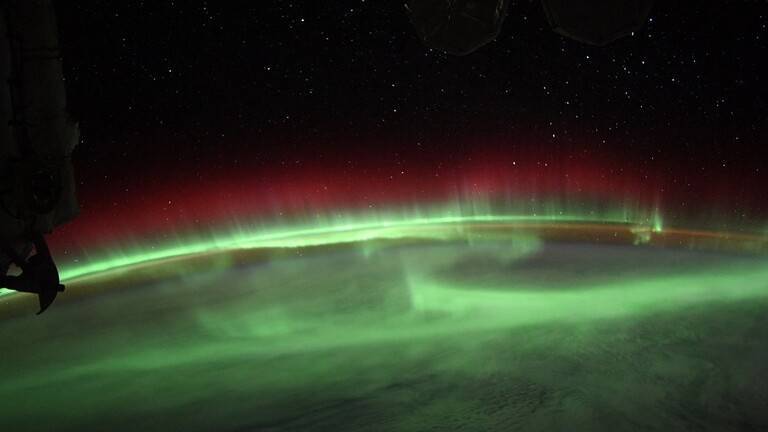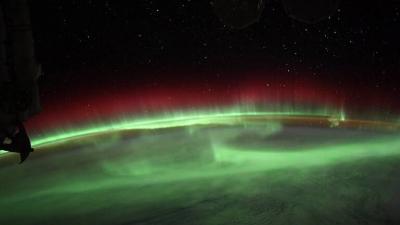An astronaut on board the International Space Station captured stunning photographs of the aurora, showing the effects of a "cannibal" solar eruption that caused geomagnetic storms on Earth. NASA astronaut Bob Hines, who arrived at the ISS as part of the SpaceX Crew-4 mission in April, took the amazing photos from the dome, an observatory with seven windows that provides the best vantage point for breathtaking views of Earth.
The aurora phenomenon occurs when particles from solar storms collide with gases in Earth's atmosphere, often resulting in these striking displays. While astronauts aboard the space station have a unique view of the phenomenon, the natural wonders can also be seen from the ground, with prime viewing spots in the far north, including Alaska, Canada, Iceland, Greenland, Norway, Sweden, and Finland. On the opposite side of the globe, places like Tasmania and New Zealand offer the best views of the aurora in the far south.
On Thursday, the "cannibal" eruption of highly charged, hot magnetic gas was directed towards Earth. This stream, known as a coronal mass ejection (CME), was launched from sunspots AR3078 on Monday and subsequently consumed a previous ejection launched the day before, being deemed cannibalistic. The interaction created a "mix of the two" along with intertwined magnetic fields and compressed plasma (highly ionized gas), which are known to cause strong geomagnetic storms. Experts from the National Oceanic and Atmospheric Administration (NOAA) stated that they expect geomagnetic storms ranging from G1- (minor) to G2 (moderate) levels, which could produce auroras as far south as New York and Idaho.




